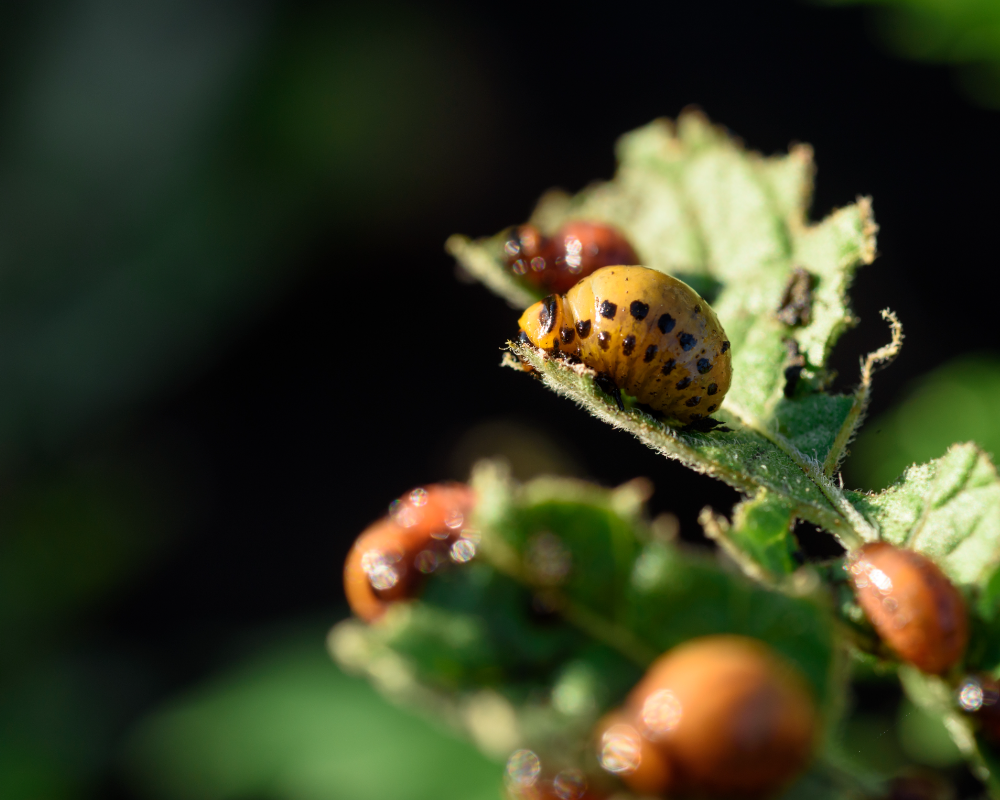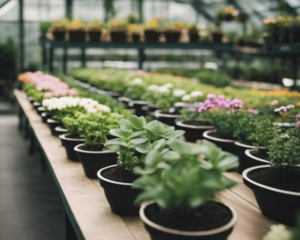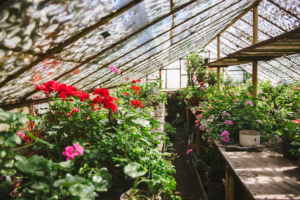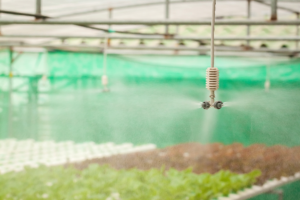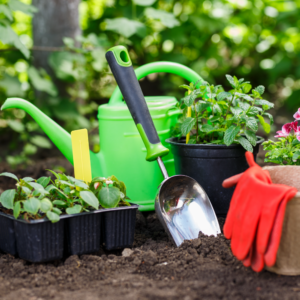Greenhouse Pests 
Hey there, fellow greenhouse enthusiasts! If you’re like me, you know that one of the biggest challenges in maintaining a flourishing greenhouse is keeping those pesky pests at bay. But fear not! I’m here to share my knowledge and experience in tackling common greenhouse pests, so you can keep your plants healthy, vibrant, and producing bountiful harvests. In this article, we’ll dive deep into the world of greenhouse pest control, exploring preventive measures, biological and organic control methods, and the power of Integrated Pest Management (IPM). So, grab your gardening gloves, and let’s get started on this journey to a pest-free greenhouse!
Understanding Greenhouse Pests
Before we can effectively control pests, it’s crucial to know what we’re dealing with. Some of the most common greenhouse pests include:
1. Aphids
These tiny, sap-sucking insects can reproduce rapidly and cause stunted growth, distorted leaves, and transmit plant viruses.
2. Whiteflies
These small, white, winged insects feed on plant sap, leading to yellowing leaves, reduced vigor, and sticky honeydew secretions that can attract sooty mold.
3. Spider mites
These miniature arachnids cause stippling and discoloration on leaves, and in severe infestations, they can create fine webbing on plant surfaces.
4. Thrips
Slender and fast-moving, thrips scrape plant surfaces, resulting in silvery speckling, distorted growth, and damaged flowers or fruit.
5. Mealybugs
These soft-bodied, white, cottony insects suck plant sap, causing wilting, stunted growth, and a higher susceptibility to diseases.
Signs of pest infestations can include visible insects on plants, damaged or discolored leaves, stunted growth, and the presence of honeydew or sooty mold. Pests can significantly impact plant health and yield, so it’s essential to take action as soon as you notice any indications of an infestation.
Preventive Measures
As the old adage goes, “An ounce of prevention is worth a pound of cure.” Implementing preventive measures is key to minimizing pest issues in your greenhouse. Here are some tips to keep your greenhouse environment less favorable for pests:
- Maintain a clean and tidy greenhouse by removing dead plant material, debris, and weeds regularly.
- Practice proper sanitation by disinfecting tools, equipment, and surfaces to prevent the spread of pests and diseases.
- Implement quarantine measures for new plants, isolating them from your main greenhouse for a period of time to monitor for any signs of pests or diseases.
- Monitor your plants closely and regularly for early detection of pest issues. Catching infestations early makes them much easier to manage.
- Control environmental factors, such as temperature, humidity, and ventilation, to create conditions less conducive to pest growth and reproduction.
Biological Control Methods
One of the most fascinating and eco-friendly approaches to pest control is using biological methods. This involves recruiting beneficial insects and other organisms to keep pest populations in check. Let’s explore some of these tiny heroes:
1. Beneficial insects
- Ladybugs: These charming beetles are voracious aphid predators, happily feasting on these sap-sucking pests.
- Lacewings: Both the adults and larvae of lacewings are formidable predators, consuming aphids, mites, and other soft-bodied insects.
- Parasitic wasps: These tiny wasps lay their eggs inside pests, and as the wasp larvae develop, they feed on and ultimately kill their host.
2. Predatory mites
Predatory mites, such as Phytoseiulus persimilis, are effective in controlling spider mite populations, keeping these destructive pests at bay.
3. Nematodes
These microscopic, soil-dwelling worms can be applied to the growing media to control fungus gnats and other soil-borne pests.
While biological control methods offer a more sustainable and environmentally friendly approach, they do have some limitations. They may take longer to establish and control pest populations compared to chemical methods, and they require specific environmental conditions to thrive.
Organic Pest Control Strategies
For those who prefer a more natural approach to pest management, organic control methods offer an excellent alternative to synthetic pesticides. Here are some strategies to consider:
- Insecticidal soaps: These specially formulated soaps effectively control soft-bodied insects like aphids, whiteflies, and mealybugs.
- Horticultural oils: Derived from plants, these oils smother and kill pests by disrupting their respiratory systems.
- Neem oil: This versatile oil, extracted from the neem tree, has insecticidal and fungicidal properties, making it a valuable tool in organic pest control.
- Botanical pesticides: Plant-based pesticides, such as pyrethrin and rotenone, can provide effective pest control while minimizing environmental impact.
- Companion planting: Certain plants, like marigolds and basil, can naturally repel pests when planted alongside your main crops.
- Trap crops: Planting specific crops that are more attractive to pests can lure them away from your primary plants, reducing pest damage.
Chemical Pest Control Methods
While it’s always best to prioritize preventive, biological, and organic control methods, there may be times when chemical pesticides are necessary to manage severe pest infestations. However, it’s crucial to use these products judiciously and responsibly. Here are some key considerations:
- Identify the specific pest and choose a pesticide that targets that particular pest to minimize harm to beneficial insects and the environment.
- Always read and follow the label instructions carefully, adhering to recommended application rates and safety precautions.
- Use proper application techniques, such as spot treatments, to minimize pesticide use and limit exposure to non-target organisms.
- Wear appropriate personal protective equipment, including gloves, long-sleeved shirts, pants, and eye protection, when handling and applying pesticides.
- Be mindful of the potential impact on beneficial insects, pollinators, and the environment, and choose the least toxic option available.
Integrated Pest Management (IPM)
The most effective and sustainable approach to greenhouse pest control is through the implementation of an Integrated Pest Management (IPM) program. IPM is a holistic strategy that combines preventive measures, biological control, and judicious use of pesticides to manage pest populations while minimizing risks to human health and the environment. The key principles of IPM include:
- Monitoring and identification: Regularly inspect your plants for signs of pests and accurately identify the species to determine the most appropriate control methods.
- Establishing action thresholds: Determine the pest population levels at which control measures become necessary to prevent significant crop damage or loss.
- Employing a combination of control methods: Integrate preventive measures, biological control, and organic and chemical pesticides as needed, prioritizing the least toxic options first.
- Evaluating and adapting: Continuously monitor the effectiveness of your pest control strategies and adapt your approach based on the results and changing conditions.
By implementing an IPM program, you can effectively manage pest populations, reduce reliance on chemical pesticides, and promote a healthier, more sustainable greenhouse environment.
Cultural Practices for Pest Control
In addition to the strategies mentioned earlier, cultural practices play a vital role in pest management. These practices focus on creating an environment that is less conducive to pest growth and reproduction. Some essential cultural practices include:
- Crop rotation: Rotating the location of crops within your greenhouse can help break pest cycles and reduce the buildup of pest populations.
- Pruning and removal of infested plant parts: Regularly inspecting plants and removing any infested or damaged leaves, stems, or fruit can help limit the spread of pests.
- Mulching: Applying organic mulches, such as straw or compost, can help suppress weed growth and create a barrier against certain pests.
- Irrigation management: Proper watering techniques, such as avoiding overhead irrigation and ensuring good drainage, can minimize conditions favorable for pest development.
- Nutrient management: Providing plants with the appropriate nutrients through a well-balanced fertilization program can promote healthy growth and increase their resistance to pests.
Pest-Resistant Plant Varieties
One proactive approach to pest control is selecting plant varieties that are naturally resistant to common pests. By choosing these resilient varieties, you can reduce the likelihood of pest infestations and minimize the need for additional control measures. Here are some advantages and limitations of pest-resistant plants:
Advantages:
- Reduced reliance on pesticides, resulting in a more environmentally friendly growing system.
- Lower costs associated with pest control, as fewer interventions are required.
- Improved plant health and productivity, as plants can focus their energy on growth rather than fighting off pests.
Limitations:
- Limited availability of pest-resistant varieties for some plant species.
- Potential for pests to adapt and overcome plant resistance over time.
- Resistance may not be effective against all pest species or in all growing conditions.
When selecting pest-resistant plant varieties, research the specific pests that commonly affect the crops you wish to grow and look for varieties that have been bred or selected for their resistance to those particular pests.
Pest Control in Hydroponic Systems
Hydroponic growing systems present unique challenges when it comes to pest management. The absence of soil and the recirculating nature of hydroponic systems can create an ideal environment for certain pests to thrive if left unchecked. Here are some key considerations for pest control in hydroponic systems:
- Maintaining water quality and hygiene: Regularly monitor and maintain the pH, temperature, and nutrient levels of your hydroponic solution. Keep the system clean and free of debris to minimize pest habitats.
- Biological control options: Incorporate beneficial insects, such as predatory mites or parasitic wasps, that can effectively control pests in hydroponic environments.
- Adapting IPM strategies: Tailor your IPM approach to the specific needs of your hydroponic system, focusing on prevention, early detection, and targeted interventions.
- Utilizing physical barriers: Install screens or filters to prevent pests from entering the system through air vents or water inlets.
- Quarantine measures: Isolate new plants before introducing them into your hydroponic system to minimize the risk of pest infestations.
Common Mistakes in Greenhouse Pest Control
Despite our best efforts, sometimes we may inadvertently make mistakes that can exacerbate pest problems. Here are some common pitfalls to avoid:
- Overreliance on chemical pesticides: While pesticides can be effective in controlling pests, overuse can lead to resistance, harm beneficial insects, and pose risks to human health and the environment.
- Improper identification of pests: Misidentifying pests can result in ineffective control measures and wasted resources. Take the time to accurately identify the pest species before selecting a control strategy.
- Neglecting preventive measures: Failing to implement preventive measures, such as sanitation and quarantine protocols, can leave your greenhouse vulnerable to pest infestations.
- Lack of monitoring and record-keeping: Regular monitoring and record-keeping are essential for early detection of pest issues and evaluating the effectiveness of control measures.
- Ignoring beneficial insects and natural predators: Overlooking the role of beneficial insects and natural predators can disrupt the delicate balance of your greenhouse ecosystem and exacerbate pest problems.
Troubleshooting Pest Control Issues
Even with a well-designed pest management plan, problems can still arise. When troubleshooting pest control issues, consider the following steps:
- Identify the root cause of the pest problem: Look for factors such as environmental conditions, cultural practices, or changes in the growing system that may be contributing to the pest issue.
- Adjust control strategies based on observations: If a particular control method isn’t providing satisfactory results, be willing to adapt and try alternative approaches.
- Seek expert advice and resources: Consult with experienced growers, extension agents, or pest management professionals for guidance and recommendations specific to your situation.
- Continuously learn and stay updated: Keep yourself informed about the latest research, techniques, and products in pest control to improve your knowledge and skills.
Record-keeping and Evaluation
Documenting your pest control activities and evaluating their effectiveness is crucial for making informed decisions and improving your pest management strategies over time. Here’s why record-keeping and evaluation are so important:
- Tracking progress: By keeping detailed records of pest sightings, control measures, and results, you can track the progress of your pest management efforts and identify trends or patterns.
- Assessing effectiveness: Regularly evaluating the success of your control methods allows you to determine which strategies are working well and which may need adjustment.
- Planning for the future: Analyzing your pest management data can help you anticipate potential issues and develop proactive plans for the upcoming growing seasons.
- Compliance and certification: Maintaining accurate records is often necessary for compliance with regulations or certification programs, such as organic certifications.
To make the most of your record-keeping and evaluation efforts, consider using a standardized system for documenting pest sightings, control measures, and outcomes. Regularly review your records and use the insights gained to refine your pest management plan and make data-driven decisions.
Conclusion
Effective pest control is an essential aspect of successful greenhouse management. By understanding common greenhouse pests, implementing preventive measures, and utilizing a combination of biological, organic, and chemical control methods, you can create a robust IPM program that promotes plant health and minimizes pest-related losses.
Remember, the key to successful pest management is a proactive, integrated approach that emphasizes prevention, early detection, and continuous evaluation. Stay vigilant, keep learning, and don’t be afraid to adapt your strategies as needed.
With dedication, knowledge, and a little bit of creativity, you can conquer greenhouse pests and enjoy the rewards of a thriving, bountiful growing environment. Happy gardening!
Frequently Asked Questions
Greenhouse Pests
Greenhouse Pests
- Install insect screens on vents, doors, and other openings to create a physical barrier against flying pests.
- Use double-door entryways or air curtains to minimize the risk of pests entering when people move in and out of the greenhouse.
- Implement strict sanitation protocols, such as cleaning and disinfecting tools, equipment, and surfaces regularly.
- Quarantine new plants before introducing them into your main growing area to prevent the spread of pests.
- Maintain a clean, weed-free environment around the outside of your greenhouse to reduce pest habitats.
- Regularly inspect and remove any infested or damaged plant material to prevent the spread of pests within the greenhouse.
Greenhouse Pests
Greenhouse Pests
- Install insect screens on vents, doors, and other openings to create a physical barrier against flying pests.
- Use double-door entryways or air curtains to minimize the risk of pests entering when people move in and out of the greenhouse.
- Implement strict sanitation protocols, such as cleaning and disinfecting tools, equipment, and surfaces regularly.
- Quarantine new plants before introducing them into your main growing area to prevent the spread of pests.
- Maintain a clean, weed-free environment around the outside of your greenhouse to reduce pest habitats.
- Regularly inspect and remove any infested or damaged plant material to prevent the spread of pests within the greenhouse.
Greenhouse Pests
Greenhouse Pests
- How do I identify specific pests in my greenhouse? Identifying pests can be tricky, but there are several resources available to help. Start by examining the affected plants closely, looking for visible insects, larvae, or eggs. Use a magnifying glass for smaller pests. Compare your observations with pest identification guides, which are readily available online, in gardening books, or through local extension offices. You can also take clear pictures of the pests and damaged plants and seek assistance from experienced growers or entomologists.
- Can I use natural predators and beneficial insects alongside chemical pesticides? While it’s possible to use natural predators and beneficial insects in conjunction with chemical pesticides, it’s essential to exercise caution. Many chemical pesticides can harm or kill beneficial insects, disrupting the natural balance of your greenhouse ecosystem. If you must use chemical pesticides, opt for selective products that target specific pests and have minimal impact on beneficial organisms. Always follow label instructions and consider applying pesticides in a targeted manner, such as spot treatments, to minimize exposure to beneficial insects.
- How often should I monitor my greenhouse for pests? Regular monitoring is crucial for early detection and effective pest management. The frequency of monitoring depends on factors such as the size of your greenhouse, the types of crops grown, and the time of year. As a general guideline, aim to inspect your plants at least once a week, paying close attention to the undersides of leaves, stems, and growing media. During periods of increased pest activity or if you’ve had previous pest issues, you may want to monitor more frequently, such as every 2-3 days.
- What are some common signs of pest infestations? Common signs of pest infestations include:
- Visible insects, mites, or eggs on plants
- Damaged leaves, such as holes, stippling, or discoloration
- Stunted or distorted plant growth
- Presence of sticky honeydew or black sooty mold on leaves
- Wilting or yellowing of leaves, despite adequate watering and nutrition
- Webbing on plants, which can indicate spider mite infestations If you notice any of these signs, take prompt action to identify the specific pest and implement appropriate control measures.
- How can I prevent pests from entering my greenhouse in the first place? Preventing pests from entering your greenhouse is a critical component of effective pest management. Here are some strategies to consider:
- Install insect screens on vents, doors, and other openings to create a physical barrier against flying pests.
- Use double-door entryways or air curtains to minimize the risk of pests entering when people move in and out of the greenhouse.
- Implement strict sanitation protocols, such as cleaning and disinfecting tools, equipment, and surfaces regularly.
- Quarantine new plants before introducing them into your main growing area to prevent the spread of pests.
- Maintain a clean, weed-free environment around the outside of your greenhouse to reduce pest habitats.
- Regularly inspect and remove any infested or damaged plant material to prevent the spread of pests within the greenhouse.
Greenhouse Pests
Greenhouse Pests

